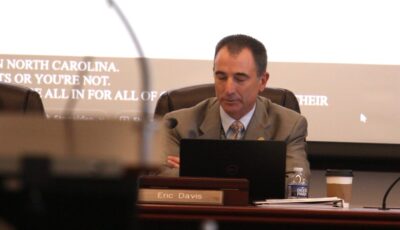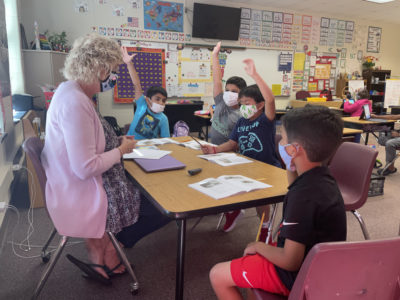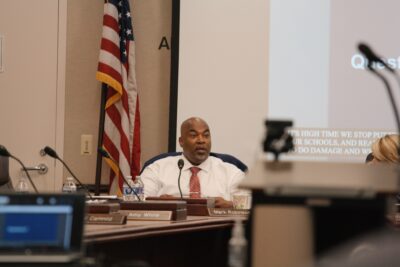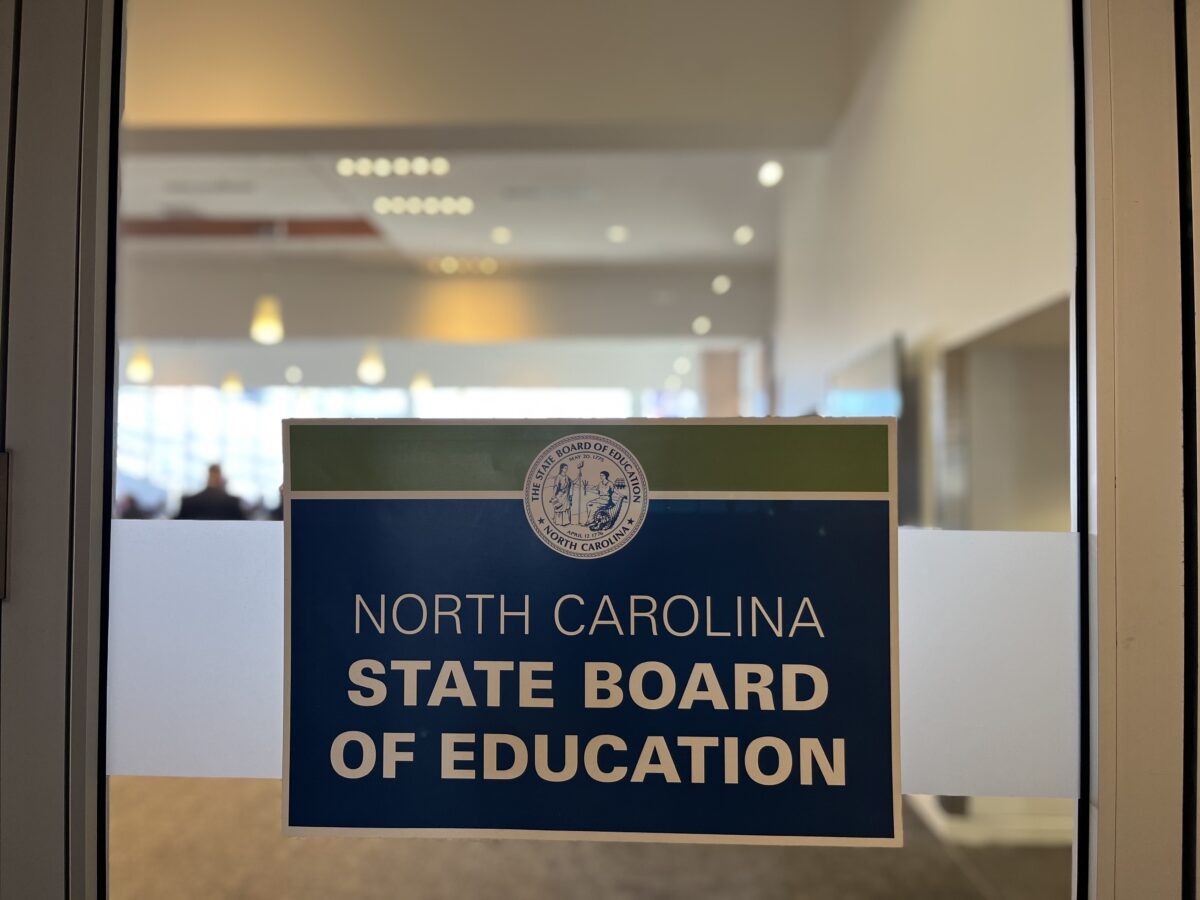
|
|
Developing literacy is an important step for students and it is one most associate with lower grades.
But at the State Board of Education’s Nov. 1 work session, literacy experts discussed the importance of continuing to focus on promoting reading proficiency for older students, like middle schoolers.
North Carolina reformed its reading instruction for young students in 2021 with the Excellent Public Schools Act of 2021 (EPSA).
The law works to use the Read to Achieve program, which helps ensure that students reach reading proficiency with the ability to comprehend and apply complex texts by the end of third grade with the goal of secondary education and career success.
“We know that does not end at third grade,” said Donna Bledsoe, principal of Cedar Ridge Elementary School in Surry County and 2023 Principal of the Year.
During the meeting, officials discussed how students shift from “learning to read” to “reading to learn” by fourth grade. But by middle school, it remains important to identify and fill in any gaps left behind.
“A lot of kids do compensate for whatever kind of ineffective reading instruction that they have had in elementary school,” state Superintendent Catherine Truitt said. “So not all kids are coming to school unable to read, but their proficiency is not such that they can keep up with the volume of reading they need to do in middle and high school and the complexity of the texts.”
In 2022, 32% of North Carolina students in fourth grade performed at or above the National Assessment of Educational Progress (NAEP) proficient level, according to Tammy Howard, senior director of the Office of Accountability and Testing Division of Standards, Accountability, and Research. This was a drop from 36% in 2019, Howard said, but this isn’t significantly different.
Howard also discussed End-Of-Grade test results, which measure the percentage of students at or above proficiency (scored at level three on the tests) in reading in grades three through five.
The number of students testing at or above level three is showing improvement compared to pandemic-era declines, she said. You can read more about the most recent test results here.
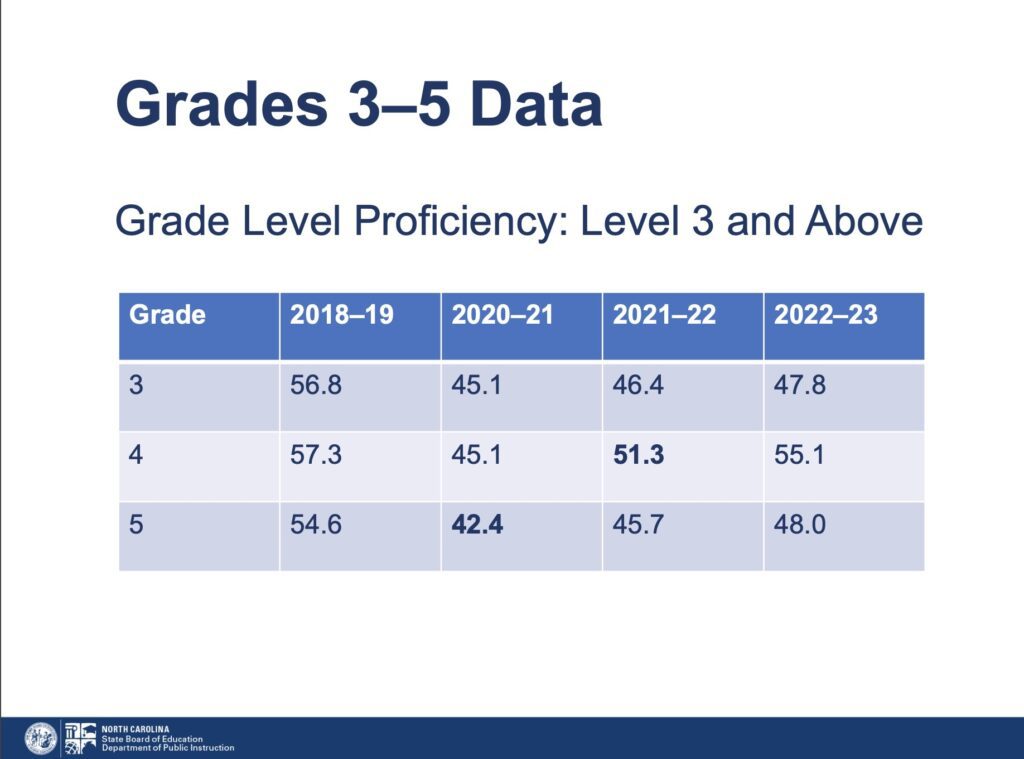
Truitt said the data show most students do not have the ideal reading proficiency and the middle grades need educators with literacy training.
“We cannot stop at third grade,” said Board member Jill Camnitz.
Literacy efforts in schools
Ever since the EPSA was passed, teachers across North Carolina have been undergoing training to learn how to incorporate the science of reading into their instruction through LETRS.
Lexia, an organization that focuses on promoting and improving literacy, provides LETRS (Language Essentials for Teachers of Reading and Spelling), which is a suite based on the science of reading that helps educators improve students’ literacy and reading skills.
The 2022-23 school year is the first year implementation of the science of reading began in classrooms, through the LETRS program. Deputy State Superintendent Michael Maher previously said it is likely that the state will fully know results from these efforts when students now in kindergarten reach third grade.
As of August, 29 North Carolina school districts have completed the LETRS professional learning, with remaining districts expected to complete training by summer 2024.
Representatives from Bertie County Schools discussed their journey with LETRS and the success the school has had with the program.
The district has focused on promoting explicit multi-sensory instruction in reading lessons while making writing a focus, said Linda Bulluck, the district’s executive director of curriculum and instruction.
Bulluck said schools in Bertie County have benefited from instructional coaches and interventionists, with some teachers and principals having attended the North Carolina Instructional Leadership Academy.
Schools are also promoting conversations between elementary and middle school teachers about strategies to help students, while working on literacy interventions for middle school and even high school, Bulluck said.
Bertie County Schools was also awarded the True Trailblazer Award during the meeting for its work in promoting the science of reading.
While LETRS primarily focuses on learning for younger students in third grade and below, Lexia also offers Aspire, a similar program for fourth through eighth grade that provides professional development for educators.
Lexia representative Brandie Turner said Aspire is more flexible and personalized and takes less time. The course takes about 40 hours to complete and is all done asynchronously.
The Board did not discuss adopting the program during their meeting.
Bledsoe also presented at the meeting to discuss how her district approaches literacy instruction after third grade.
Surry County Schools use Dibels 8th Edition, a set of one-minute fluency measures to assess a student’s abilities.
While Dibels 8 is used in North Carolina from kindergarten to third grade, Bledsoe said it can also benefit fourth and fifth graders. Educators can use the program to tailor education to students’ needs and support students as they continue to develop literacy skills, she said.
Truitt said she would like to see EPSA amended to require Dibels 8 for fourth and fifth graders to continue to individualize and personalize instruction for teachers in upper elementary levels.



